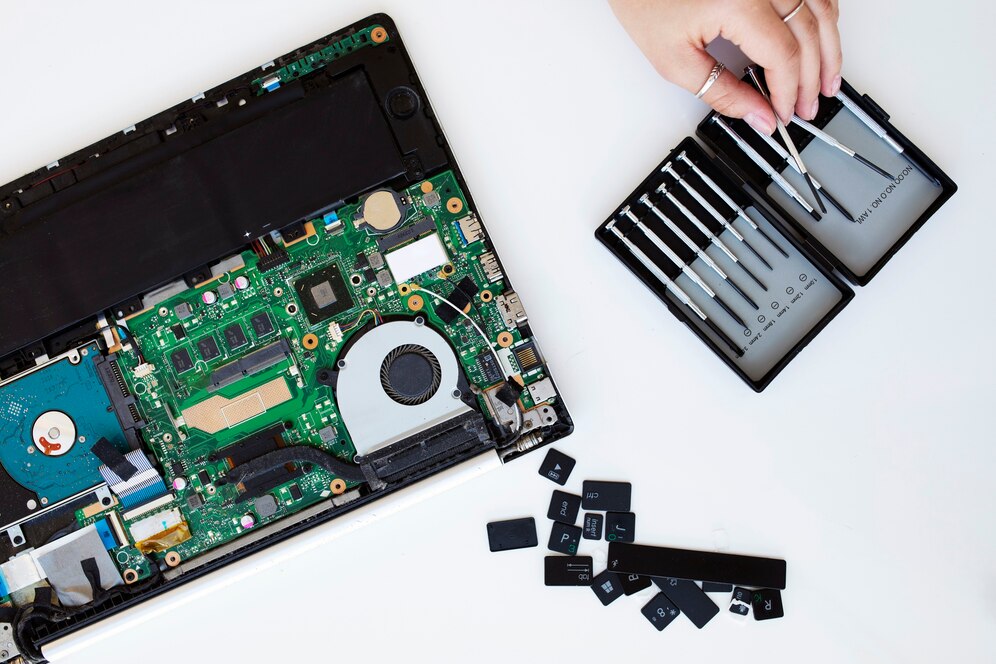Discover the Best Laptop for Your Needs

Finding the perfect laptop isn’t a one-size-fits-all game. Whether you’re a hardcore gamer seeking a gaming laptop with top-of-the-line graphics or a casual user browsing for a budget laptop for everyday tasks, understanding your needs is vital.
Consider your multitasking habits – will you juggle multiple programs, demanding random access memory (RAM)? Prioritize screen quality and processing power for creative endeavors. Don’t be afraid to explore most laptops in between – the sweet spot of features and affordability might surprise you.
Remember, high-end laptops are only sometimes necessary if you push the boundaries of computing. Ultimately, the “best” laptop is the one that aligns seamlessly with your unique requirements and budget.
How to choose the best laptop?
Choosing the best laptop can be manageable! Start with a laptop buying guide to understand key features. Decide on the operating system (Windows, macOS, ChromeOS) that best suits your needs. If flexibility is crucial, consider convertible laptops that seamlessly switch between laptop and tablet mode.
Consider how much RAM you’ll need for multitasking: 4GB for basic tasks, 8GB for everyday use, and 16GB+ for demanding applications. Prioritize long battery life if you’re often on the go. Don’t forget to factor in your budget and desired features – explore different brands and models to find the perfect balance. Remember, the best laptop is the one that empowers your specific needs and lifestyle!
Things to consider when buying a laptop
Battery life
Beyond mere convenience, battery life is a crucial metric for user experience in modern electronics. Whether checking emails on a smartphone or editing videos on a laptop, staying unplugged is paramount. This invisible tether to the wall socket can significantly impact how we interact with our devices.
Consumers prioritize devices boasting great battery life for a reason. Extended usage without constant recharging translates to freedom, increased productivity, and reduced anxiety. Manufacturers constantly innovate, seeking to improve energy density and power efficiency to extend battery lifespans.
Operating system
The operating system (OS) serves as the conductor of your computer, orchestrating all its resources and applications. While most laptops come pre-installed with a specific OS (Windows, macOS, ChromeOS), understanding their differences can impact your choice. Consider your needs: CPU performance demands might favor Windows or macOS, while ChromeOS shines for web-based tasks with lower CPU requirements.
Each OS offers a unique user interface, security features, and software compatibility. Think about your preferred workflow and the programs you rely on. Remember to consider the impact of ease of use and personal preference. Ultimately, the “best” OS isn’t a one-size-fits-all answer but rather the one that aligns with your specific needs and preferences, ensuring smooth operation and optimal CPU performance utilization.
Choose the right screen size
Finding the sweet spot for screen size is critical to unlocking laptop bliss. Power users juggling multiple windows might crave a larger canvas, like a 15-inch or 17-inch display, for enhanced multitasking and visual real estate. But remember, portability takes a hit with more giant screens.
If you prioritize travel or a minimalist setup, a 13-inch or even a 12-inch display might be your golden ticket. Please take a look at your visual needs, too. If you’re a graphics whiz working with photos or videos, higher-resolution displays like 4K or QHD+ might be worth the investment, especially on laptops with dedicated graphics cards.
However, integrated graphics benefit less from such high resolutions, so please be careful with your hardware setup. Ultimately, the “best” screen size isn’t a number but a balance between your visual demands, portability needs, and overall comfort. Experiment if possible, and choose the most natural and productive size for your work style.
Storage space
Regarding storage space, size matters, especially for power users. For basic tasks and casual browsing, 256GB might suffice. But venture into video editing or graphic design, and you’ll quickly yearn for more. If you plan to utilize a dedicated graphics card, expect larger project files and raw footage to gobble up space rapidly. Consider 512GB or 1TB for a comfortable buffer, especially if you plan to archive your projects.
Remember, external storage options like hard drives and cloud storage can be your allies, but internal storage speed is crucial in smooth editing workflows. Think about your future needs and resist the urge to skimp on storage – it’s an investment that will pay off in the long run, saving you frustration and potential data loss down the line.

What type of OS is right for you?
Choosing the right operating system (OS) isn’t just about brand loyalty. It’s about finding the symphony that harmonizes with your digital needs. Apple computers run macOS, renowned for its user-friendly interface and seamless integration within the Apple ecosystem. If you prioritize design, security, and a smooth workflow, macOS could be your perfect match. However, it comes at the cost of limited hardware options and software compatibility.
Windows laptop powered by Intel Core processor offer vast flexibility and compatibility with a wide range of software, making them ideal for gamers, power users, and those who need specific industry-standard programs. However, Windows can be more resource-intensive and susceptible to security vulnerabilities than macOS.
Ultimately, the right OS depends on your priorities. Consider your needs: Do you value ease of use and a streamlined experience (macOS), or do you require maximum flexibility and software compatibility (Windows)? Do you primarily use Apple devices (macOS), or do you need broader hardware options (Windows)? Remember, there’s no single best OS – the perfect symphony lies in the one that resonates with your unique digital lifestyle.
Windows, Mac, Linux, Android, or Chrome OS?
Deciding between operating systems can be daunting, and the best choice truly depends on your needs and priorities. Here’s a breakdown of popular options:
Windows laptops: Reign supreme for gaming laptops, offering powerful hardware and compatibility with most laptop models, including MacBook Pro. You get access to a vast library of software, including industry-standard programs, but be prepared for occasional maintenance and security updates.
Apple devices: Run macOS, known for its intuitive interface and seamless integration within the Apple ecosystem. If you prioritize design, security, and a smooth workflow, especially with other Apple devices, macOS is a strong contender. However, hardware options and software compatibility are more limited.
Chrome OS laptops: Lightweight and affordable, these prioritize web-based tasks and Android apps. They’re excellent for students or casual users who value simplicity and long battery life. However, something other than demanding software like video editing tools might be available.
Linux: Offers the most flexibility and customization but requires technical know-how and could be more user-friendly than other options. It is ideal for developers or power users comfortable tinkering with their systems.

Celebrate Life’s Milestones in Camella!
Make unforgettable memories in a Camella home.
Our communities are designed to elevate your living experience.


